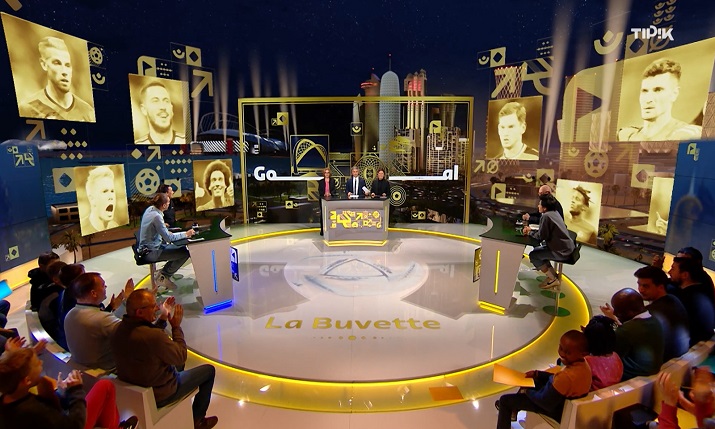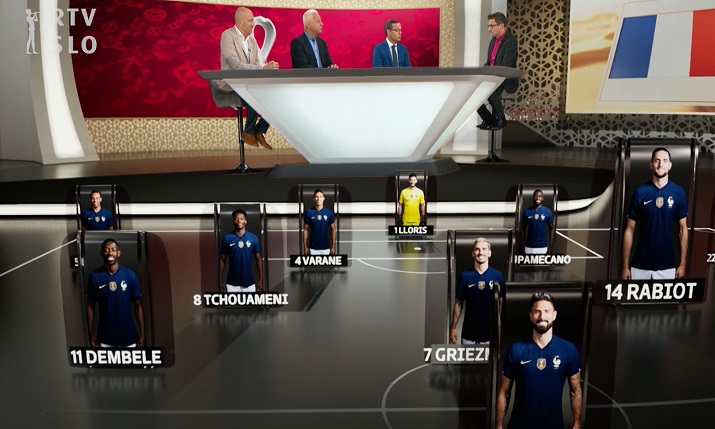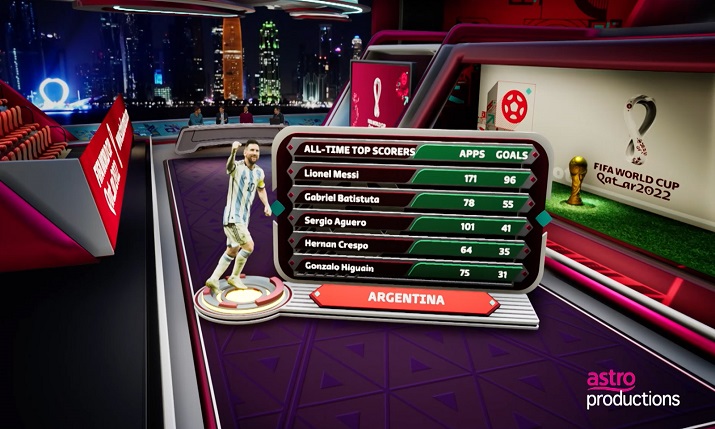Zero Density’s Reality Engine used to power broadcasters’ World Cup studios
Belgium’s RTBF, France’s TF1, Qatar’s Alkass, Maldives’ ICE TV, Malaysia’s Astro, Slovenia’s RTV SLO, and the UAE’s Asharq News built virtual studios for all their live coverage of the Qatar 2022 World Cup using Zero Density’s Reality Engine.
Zero Density’s Unreal Engine-native platform Reality Engine includes a real-time broadcast compositing system enabling real-time visual effects pipelines featuring video I/O, keying, compositing and rendering in one machine.
During the tournament, RTBF broadcast live every day from 3pm to 10.30pm. To create a virtual studio, the RTBF team set up a portal window LED screen behind the presenter. This screen was then flanked by two green screens, while standard LED screens were used behind the studio guests. The design and Reality integration were carried out by DreamWall.
The virtual studio was run by three engines, with two used for the virtual set and one for a flycam feature. Using the Reality ecosystem, the team was able to place the hosts on a photorealistic rooftop in Qatar, with different lighting used to represent daytime, evening, and night.

RTBF’s World Cup studio
The virtual camera shots enabled RTBF to move from a studio to stadium, providing a view of all eight football stadiums in Doha. To do this, the team recreated the entire city and all eight stadiums in 3D. They also used augmented reality elements to display scores, player and team statistics, and even dynamic team lineups on the virtual studio’s LED wall powered by Reality. The RTBF team also teleported several football players from Qatar into the studio for live interviews.
France’s TF1 used Reality for its daily World Cup coverage on Le Mag with presenter Denis Brogniart. Kennedy Agency designed the graphics and DreamWall took care of Reality integration and setup.
The hosts were located on a balcony on the edge of the stadium looking over the playing field. Player lineups and game tactics came to life in the field. Flycam feature gave TF1 the ability to go beyond the limitation of its physical location.
Slovenia’s RTV SLO dedicated its entire studio space to virtual production. Using the Reality ecosystem for the first time, RTV SLO was able to get the studio ready for broadcast in three weeks.
This was achieved by three designers working on different parts of the set, before combining them to make one big scene. RTV SLO’s regular U-shaped 80m2 cyclorama was then extended with an additional flat cyclorama, which provided more space for the presenter to move and host the FIFA World Cup commentary.

RTV SLO got its studio ready for broadcast in three weeks
The shape and colour space conversions were handled correctly by Reality Keyer, Zero Density’s real-time image based keyer that works on GPU. RTV SLO went live everyday with three cameras – each of which was linked to one Reality Engine plus one RealityHub to power all the real-time Unreal Engine graphics involved.
In the UAE, the Asharq News team enhanced their set with a virtual set extension, allowing them to create an expansive look without using a green screen background. And in the Maldives, ICE TV decided to build its first cyclorama for coverage of the World Cup.
For Malaysia’s Astro, Qatar 2022 was the broadcaster’s first-ever virtual studio production. The team used three Reality Engines to power the set, which was designed by Astro’s in-house design & motion department. Zero Density’s partner Broadcast Elements helped with the Reality integration, installation and training.

Qatar 2022 was Astro’s first-ever virtual studio production
And Qatar’s Alkass Sports Channels group of eight channels opted for virtual sets instead of five physical sets. With the help of four Reality Engines, the Alkass team built a virtual set and prepared multiple designs that were ready to broadcast the World Cup live in just a month. The team was also able to use Reality Engine’s capabilities to teleport talent to the studio live, which Zero Density said was a first in Qatar’s television history.
